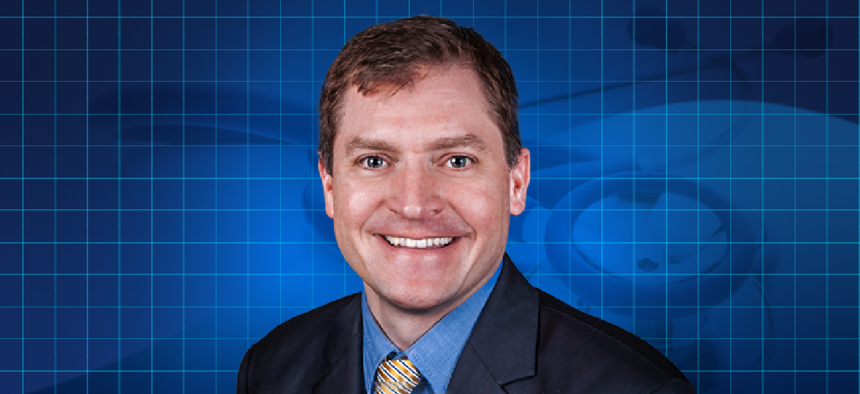When Gov. Andrew Cuomo took office in 2011, he made overhauling the state’s bloated Medicaid system a priority, tapping Jason Helgerson for state Medicaid director and executive director of the governor’s Medicaid Redesign Team. Seven years later, after revamping the state’s Medicaid system and introducing several health care reforms that emphasize cost-efficiency, Helgerson will be departing after the state’s budget is finalized in the spring.
“Eleven years as a Medicaid director is a very, very long time – in fact I'm the longest tenured one in the country,” Helgerson explained in an interview with City & State, referring to his seven years as New York’s Medicaid director and four years in Wisconsin, where he held the same position.
Helgerson will be leaving New York with a legacy of having reorganized an expensive Medicaid system and instituting several reforms. “It’s really hard to overstate how dramatically the management of Medicaid changed during his tenure,” said Bill Hammond, director of health policy at the Empire Center, a conservative think tank. He said that Helgerson introduced the idea that it is possible to cut spending without jeopardizing value of care or access.
When Helgerson joined the administration, New York’s Medicaid spending per capita was more than twice the national average. He instituted an overall spending cap on Medicaid to rein in costs, while also focusing on quality of care.
Helgerson says the cap was an “exceptionally useful tool” because it ensured spending doesn’t spin out of control. But, Helgerson contends, the state continued to invest in critical needs, such as the supportive housing program, in which the state’s Medicaid system pays rent for high-need Medicaid members, the only program of its kind in the country.
“I think it's introduced an era of transparency and financial accountability that did not exist in the program in the past,” Helgerson said about the spending caps. Medicaid spending had been a political football for lawmakers during budget negotiations before caps were instated, Helgerson argued, and now politicians can properly prioritize on health care since there is a limit to what can be spent. However, state Senate Health Committee Chair Kemp Hannon has questioned whether the cap is actually successful, saying in 2017 that the cap had “outlived its purpose” and was “too flexible, has far too many leaks and doesn’t cover the problems.”
Helgerson also oversaw the state’s Delivery System Reform Incentive Payment, or DSRIP, an $8 billion waiver from the federal government that aims to reduce avoidable hospital visits and help health care providers transition to value-based care, where fees would be paid to providers based on quality of care instead of the number of visits by a patient.
Helgerson said that the state was seeing the positive effects of DSRIP, as there has already been a 15 percent reduction in avoidable hospital visits and the state is on track to outpace its initial goal of reducing these hospitalizations by 25 percent. He acknowledged that it could take a few years to see bigger, systemic changes accomplished by DSRIP.
“I’m very bullish that this vision of a more integrated, a more value-focused health care system that really responds to the needs of patients and communities is coming. DSRIP is helping to bring it about,” he said.
Some critics contend that paying health care providers for performance unfairly punishes hospitals serving low-income communities. As City & State reported in 2016, “Some health policy experts, however, believe such penalties disproportionately affect safety-net providers, which often lack the technology and other resources to successfully adapt to the system. Safety-net hospitals, moreover, tend to serve communities with fewer primary care physicians (which could account for some preventable admissions and avoidable emergency room visits) as well as patient populations presenting higher rates of co-morbidities – chronic conditions often compounded by socioeconomic challenges, such as housing insecurity.”
Helgerson also helped the Cuomo administration repair the relationship between the governor’s office and 1199SEIU, the state’s largest health care workers’ union. Helen Schaub, political director for 1199SEIU, told City & State that the union had worked with him closely.
“He’s been very committed to bringing all stakeholders to the table in a very transparent way, which we have appreciated,” Schaub said.
The Cuomo administration seems to agree that Helgerson’s departure will be a loss. Rich Azzopardi, a spokesman for the governor, cited Helgerson’s work with the federal government: “He was… invaluable with our efforts to secure the Medicaid waiver from the Obama administration that allowed the largest healthcare system transformation in the nation to continue, and greatly helped in our efforts to defeat punitive Republican federal legislation that would have devastated New York’s healthcare network,” Azzopardi said.
Helgerson said that his focus for the next few months will be on passing a budget that maintains the spending cap and continuing with the DSRIP agenda, but his future after he leaves the Cuomo administration is uncertain. “The honest-to-God answer is that I'm not exactly sure,” Helgerson laughed. He said that he planned to join the private sector, a significant change after spending his career in government service. “I want to be focused is on the future of health care, new delivery models, supporting organizations and providers, moving to the value-based world – those are things I'm passionate about,” he said.
Helgerson considers his greatest accomplishment turning around a system marred by overspending and political infighting among lawmakers. “That was not remotely possible back in 2010, but yet here we are seven years later and that's exactly the world we are in,” he said.
NEXT STORY: Caucus Weekend 2018


